DS1338 I²C RTC: Pinout, Equivalent and Datasheet
8 Terminations 3.3V 8 Pin DS1338 Real Time Clocks 0.032MHz
The DS1338 serial real-time clock (RTC) is a lowpower, full binary-coded decimal (BCD) clock/calendar plus 56 bytes of NV SRAM. Address and data are transferred serially through an I²C interface. Furthermore, Huge range of Semiconductors, Capacitors, Resistors and IcS in stock. Welcome RFQ.

Arduino Real Time Clock - Using the Tiny RTC
DS1338 Pinout
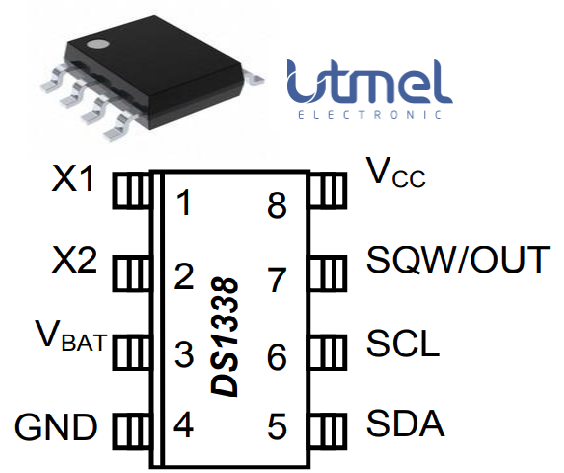
Pinout
DS1338 CAD Model
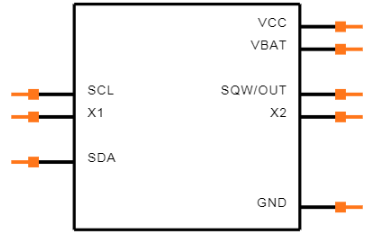
Symbol
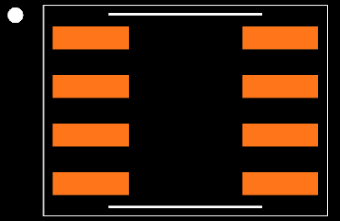
Footprint
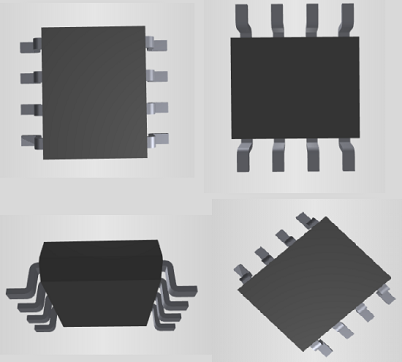
3D Model
DS1338 Overview
The DS1338 serial real-time clock (RTC) is a lowpower, full binary-coded decimal (BCD) clock/calendar plus 56 bytes of NV SRAM. Address and data are transferred serially through an I2C interface. The clock/calendar provides seconds, minutes, hours, day, date, month, and year information. The end of the month date is automatically adjusted for months with fewer than 31 days, including corrections for leap year. The clock operates in either the 24-hour or 12-hour format with AM/PM indicator. The DS1338 has a built-in powersense circuit that detects power failures and automatically switches to the backup supply, maintaining time and date operation. The DS1338 operates as a slave device on the serial bus. Access is obtained by implementing a START condition and providing a device identification code, followed by data. The DS1338 supports the I2C protocol. A device that sends data onto the bus is defined as a transmitter and a device receiving data is a receiver. The device that controls the message is called a master. The devices that are controlled by the master are referred to as slaves.
This article provides you with a basic overview of the DS1338 I2C RTC, including its pin descriptions, features and specifications, etc., to help you quickly understand what DS1338 is.
DS1338 Features
● Completely Manages All Timekeeping Functions
◆ RTC Counts Seconds, Minutes, Hours, Date of the Month, Month, Day of the Week, and Year with Leap-Year Compensation Valid Up to 2100
◆ 56-Byte, Battery-Backed, General-Purpose RAM with Unlimited Writes
◆ Programmable Square-Wave Output Signal
● Surface-Mount Package with an Integrated Crystal (DS1338C) Saves Additional Space and Simplifies Design
● Interfaces with Most Microcontrollers
◆ I2C Serial Interface
● Low-Power Operation Extends Battery Backup Run Time
◆ Automatic Power-Fail Detect and Switch Circuitry
● -40°C to +85°C Industrial Temperature Range Supports Operation in a Wide Range of Applications
● Underwriters Laboratories (UL®) Recognized
Specifications
- TypeParameter
- Factory Lead Time6 Weeks
- Mounting Type
The "Mounting Type" in electronic components refers to the method used to attach or connect a component to a circuit board or other substrate, such as through-hole, surface-mount, or panel mount.
Surface Mount - Package / Case
refers to the protective housing that encases an electronic component, providing mechanical support, electrical connections, and thermal management.
8-SOIC (0.154, 3.90mm Width) - Surface Mount
having leads that are designed to be soldered on the side of a circuit board that the body of the component is mounted on.
YES - Number of Pins8
- Operating Temperature
The operating temperature is the range of ambient temperature within which a power supply, or any other electrical equipment, operate in. This ranges from a minimum operating temperature, to a peak or maximum operating temperature, outside which, the power supply may fail.
-40°C~85°C - Packaging
Semiconductor package is a carrier / shell used to contain and cover one or more semiconductor components or integrated circuits. The material of the shell can be metal, plastic, glass or ceramic.
Tube - Published2006
- JESD-609 Code
The "JESD-609 Code" in electronic components refers to a standardized marking code that indicates the lead-free solder composition and finish of electronic components for compliance with environmental regulations.
e3 - Pbfree Code
The "Pbfree Code" parameter in electronic components refers to the code or marking used to indicate that the component is lead-free. Lead (Pb) is a toxic substance that has been widely used in electronic components for many years, but due to environmental concerns, there has been a shift towards lead-free alternatives. The Pbfree Code helps manufacturers and users easily identify components that do not contain lead, ensuring compliance with regulations and promoting environmentally friendly practices. It is important to pay attention to the Pbfree Code when selecting electronic components to ensure they meet the necessary requirements for lead-free applications.
yes - Part Status
Parts can have many statuses as they progress through the configuration, analysis, review, and approval stages.
Active - Moisture Sensitivity Level (MSL)
Moisture Sensitivity Level (MSL) is a standardized rating that indicates the susceptibility of electronic components, particularly semiconductors, to moisture-induced damage during storage and the soldering process, defining the allowable exposure time to ambient conditions before they require special handling or baking to prevent failures
1 (Unlimited) - Number of Terminations8
- ECCN Code
An ECCN (Export Control Classification Number) is an alphanumeric code used by the U.S. Bureau of Industry and Security to identify and categorize electronic components and other dual-use items that may require an export license based on their technical characteristics and potential for military use.
EAR99 - TypeClock/Calendar
- Terminal Finish
Terminal Finish refers to the surface treatment applied to the terminals or leads of electronic components to enhance their performance and longevity. It can improve solderability, corrosion resistance, and overall reliability of the connection in electronic assemblies. Common finishes include nickel, gold, and tin, each possessing distinct properties suitable for various applications. The choice of terminal finish can significantly impact the durability and effectiveness of electronic devices.
Matte Tin (Sn) - Voltage - Supply
Voltage - Supply refers to the range of voltage levels that an electronic component or circuit is designed to operate with. It indicates the minimum and maximum supply voltage that can be applied for the device to function properly. Providing supply voltages outside this range can lead to malfunction, damage, or reduced performance. This parameter is critical for ensuring compatibility between different components in a circuit.
3V~5.5V - Terminal Position
In electronic components, the term "Terminal Position" refers to the physical location of the connection points on the component where external electrical connections can be made. These connection points, known as terminals, are typically used to attach wires, leads, or other components to the main body of the electronic component. The terminal position is important for ensuring proper connectivity and functionality of the component within a circuit. It is often specified in technical datasheets or component specifications to help designers and engineers understand how to properly integrate the component into their circuit designs.
DUAL - Peak Reflow Temperature (Cel)
Peak Reflow Temperature (Cel) is a parameter that specifies the maximum temperature at which an electronic component can be exposed during the reflow soldering process. Reflow soldering is a common method used to attach electronic components to a circuit board. The Peak Reflow Temperature is crucial because it ensures that the component is not damaged or degraded during the soldering process. Exceeding the specified Peak Reflow Temperature can lead to issues such as component failure, reduced performance, or even permanent damage to the component. It is important for manufacturers and assemblers to adhere to the recommended Peak Reflow Temperature to ensure the reliability and functionality of the electronic components.
260 - Supply Voltage
Supply voltage refers to the electrical potential difference provided to an electronic component or circuit. It is crucial for the proper operation of devices, as it powers their functions and determines performance characteristics. The supply voltage must be within specified limits to ensure reliability and prevent damage to components. Different electronic devices have specific supply voltage requirements, which can vary widely depending on their design and intended application.
3.3V - Time@Peak Reflow Temperature-Max (s)
Time@Peak Reflow Temperature-Max (s) refers to the maximum duration that an electronic component can be exposed to the peak reflow temperature during the soldering process, which is crucial for ensuring reliable solder joint formation without damaging the component.
NOT SPECIFIED - Base Part Number
The "Base Part Number" (BPN) in electronic components serves a similar purpose to the "Base Product Number." It refers to the primary identifier for a component that captures the essential characteristics shared by a group of similar components. The BPN provides a fundamental way to reference a family or series of components without specifying all the variations and specific details.
DS1338 - Pin Count
a count of all of the component leads (or pins)
8 - Number of Outputs1
- Qualification Status
An indicator of formal certification of qualifications.
Not Qualified - Power Supplies
an electronic circuit that converts the voltage of an alternating current (AC) into a direct current (DC) voltage.?
3.3V - Interface
In electronic components, the term "Interface" refers to the point at which two different systems, devices, or components connect and interact with each other. It can involve physical connections such as ports, connectors, or cables, as well as communication protocols and standards that facilitate the exchange of data or signals between the connected entities. The interface serves as a bridge that enables seamless communication and interoperability between different parts of a system or between different systems altogether. Designing a reliable and efficient interface is crucial in ensuring proper functionality and performance of electronic components and systems.
I2C, 2-Wire Serial - Memory Size
The memory capacity is the amount of data a device can store at any given time in its memory.
56B - Clock Frequency
Clock frequency, also known as clock speed, refers to the rate at which a processor or electronic component can execute instructions. It is measured in hertz (Hz) and represents the number of cycles per second that the component can perform. A higher clock frequency typically indicates a faster processing speed and better performance. However, it is important to note that other factors such as architecture, efficiency, and workload also play a significant role in determining the overall performance of a component. In summary, clock frequency is a crucial parameter that influences the speed and efficiency of electronic components in processing data and executing tasks.
0.032MHz - Number of Timers1
- Time Format
Time is based on a 24 hour system. This is frequently referred to as "military time". The 24 hour system is the default format.
HH:MM:SS (12/24 hr) - Date Format
The international standard recommends writing the date as year, then month, then the day:?YYYY-MM-DD.
YY-MM-DD-dd - Current - Timekeeping (Max)
The parameter "Current - Timekeeping (Max)" in electronic components refers to the maximum current that a device can draw while performing timekeeping functions. Timekeeping functions typically involve maintaining accurate time and date information within a device, such as in a real-time clock (RTC) or a microcontroller with a built-in clock. The maximum current specified for timekeeping is important for determining the power consumption of the device when it is in standby or low-power modes, as excessive current draw can drain the battery quickly. Designers need to consider this parameter when selecting components for battery-powered devices to ensure efficient power management and longer battery life.
125μA~200μA @ 3.63V~5.5V - Time-Min
Time-Min is a parameter in electronic components that refers to the minimum amount of time required for a specific operation or function to be completed. This parameter is crucial in determining the speed and efficiency of the component's performance. It is often specified in datasheets and technical documentation to provide users with information on the component's timing characteristics. Understanding the "Time-Min" parameter is essential for designing and integrating electronic components into circuits to ensure proper functionality and timing synchronization.
SECONDS - Interrupt Capability
Returns the number of interrupts available for a specified hardware device and interrupt type.
N - Voltage - Supply, Battery
Voltage - Supply, Battery refers to the nominal voltage level provided by a battery to power electronic components or circuits. It indicates the standard voltage output that a battery can deliver under typical operating conditions. This parameter is crucial for ensuring compatibility between the battery and the electronic device, as it affects performance and functionality. The voltage supply rating helps in selecting the appropriate battery for specific applications, ensuring that the device operates efficiently and safely.
1.3V~3.7V - Volatile
In the context of electronic components, the term "Volatile" refers to a type of memory or storage that requires power to maintain the stored data. When power is removed or lost, the data stored in volatile memory is also lost. This is in contrast to non-volatile memory, which retains data even when power is turned off.Volatile memory is commonly used in devices like RAM (Random Access Memory) in computers, where data needs to be quickly accessed and modified. However, it is not suitable for long-term storage of important data as it requires continuous power supply to retain information.Overall, the volatile nature of this type of memory makes it fast and efficient for temporary data storage and processing, but it is not ideal for permanent data storage due to its dependency on power supply.
NO - Information Access Method
Information Access Method refers to the techniques and protocols used to retrieve, manage, and manipulate data stored in electronic systems. It encompasses various approaches such as direct memory access, polling, interrupts, and data buses, enabling efficient communication between different components within a system. This method is crucial for optimizing data retrieval speed and ensuring effective interaction between hardware and software in electronic devices.
I2C - Features
In the context of electronic components, the term "Features" typically refers to the specific characteristics or functionalities that a particular component offers. These features can vary depending on the type of component and its intended use. For example, a microcontroller may have features such as built-in memory, analog-to-digital converters, and communication interfaces like UART or SPI.When evaluating electronic components, understanding their features is crucial in determining whether they meet the requirements of a particular project or application. Engineers and designers often look at features such as operating voltage, speed, power consumption, and communication protocols to ensure compatibility and optimal performance.In summary, the "Features" parameter in electronic components describes the unique attributes and capabilities that differentiate one component from another, helping users make informed decisions when selecting components for their electronic designs.
Leap Year, NVSRAM, Square Wave Output - Length4.9mm
- Width3.9mm
- RoHS Status
RoHS means “Restriction of Certain Hazardous Substances” in the “Hazardous Substances Directive” in electrical and electronic equipment.
ROHS3 Compliant - Lead Free
Lead Free is a term used to describe electronic components that do not contain lead as part of their composition. Lead is a toxic material that can have harmful effects on human health and the environment, so the electronics industry has been moving towards lead-free components to reduce these risks. Lead-free components are typically made using alternative materials such as silver, copper, and tin. Manufacturers must comply with regulations such as the Restriction of Hazardous Substances (RoHS) directive to ensure that their products are lead-free and environmentally friendly.
Contains Lead
DS1338 Functional Block Diagram
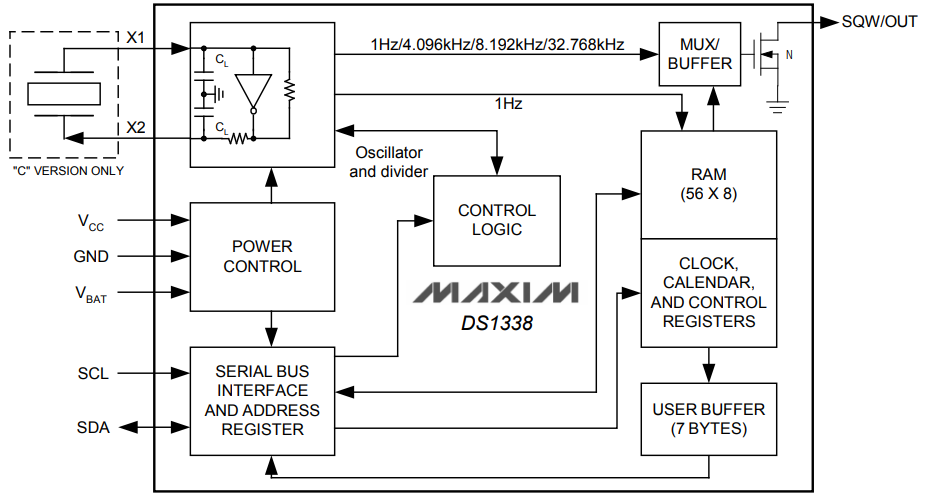
Block Diagram
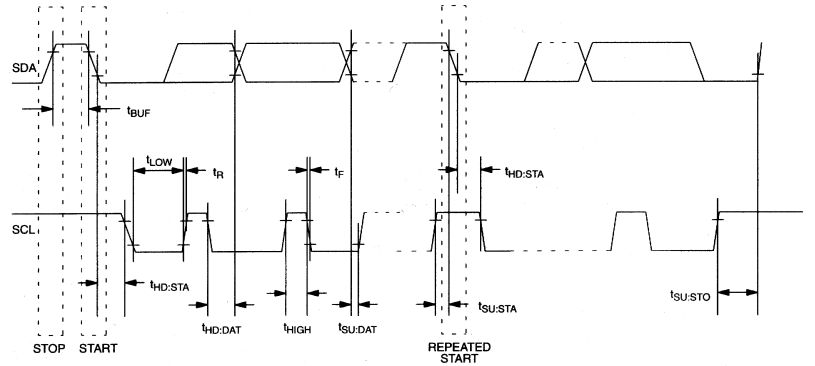
Timing Diagram
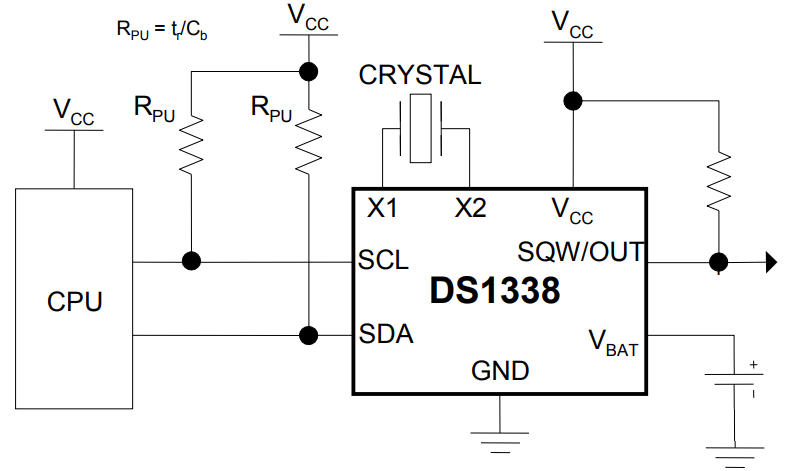
Typical Operating Circuit
DS1338 Equivalent
| Model number | Manufacturer | Description |
| 1338B-31DCGI8 | Renesas Electronics Corporation | Real Time Clock, Non-Volatile, 1 Timer(s), CMOS, PDSO16 |
| 1338B-31DCGI | Renesas Electronics Corporation | Real Time Clock, Non-Volatile, 1 Timer(s), CMOS, PDSO16 |
| DS1338Z-33 | Rochester Electronics LLC | 1 TIMER(S), REAL TIME CLOCK, PDSO8, 0.150 INCH, SOP-8 |
| DS1340Z-18 | Dallas Semiconductor | Timer or RTC |
| PT7C4307WEX | Pericom Semiconductor Corporation | Real Time Clock, Non-Volatile, 1 Timer(s), CMOS, PDSO8, GREEN, MS-012E/AA, SOIC-8 |
| PT7C4307W | Diodes Incorporated | Timer or RTC |
| DS1338Z-3 | Dallas Semiconductor | Timer or RTC |
| DS1340Z-3/T&R | Maxim Integrated Products | Real Time Clock, Non-Volatile, CMOS, PDSO8, 0.150 INCH, SOP-8 |
| DS1338Z-33+ | Maxim Integrated Products | Real Time Clock, Non-Volatile, 1 Timer(s), CMOS, PDSO8, 0.150 INCH, ROHS COMPLIANT, SOP-8 |
| 1338-31DCGI8 | Integrated Device Technology Inc | SOIC-8, Reel |
Parts with Similar Specs
- ImagePart NumberManufacturerPackage / CaseNumber of PinsMemory SizeInterfaceSupply VoltagePart StatusDate FormatTypeView Compare
DS1338Z-33
8-SOIC (0.154, 3.90mm Width)
8
56B
I2C, 2-Wire Serial
3.3 V
Active
YY-MM-DD-dd
Clock/Calendar
8-SOIC (0.154, 3.90mm Width)
8
-
I2C, 2-Wire Serial
5 V
Active
YY-MM-DD-dd
Clock/Calendar
8-SOIC (0.154, 3.90mm Width)
8
56B
I2C, 2-Wire Serial
-
Active
YY-MM-DD-dd
Clock/Calendar
8-SOIC (0.154, 3.90mm Width)
8
56B
I2C, 2-Wire Serial
-
Active
YY-MM-DD-dd
Clock/Calendar
SOIC
8
56 B
2-Wire, I2C, Serial
-
Active
YY-MM-DD-dd
-
DS1338 Applications
● Handhelds (GPS, POS Terminal)
● Consumer Electronics (Set-Top Box, Digital Recording, Network Appliance)
● Office Equipment (Fax/Printer, Copier)
● Medical (Glucometer, Medicine Dispenser)
● Telecommunications (Router, Switcher, Server)
● Other (Utility Meter, Vending Machine, Thermostat, Modem)
DS1338 Manufacturer
The market is evolving. The rules are changing. To keep your time to market short, you need integration at every level—from silicon to the supply chain. Count on Maxim Integrated to help you overcome design and architectural challenges, with integrated solutions for the industrial, medical, consumer, automotive, energy, computing, and communications realms. Maxim Integrated is also your source for power, interface, and even digital products that work in the analog world. And they're glad to support you with reference designs, tools, technical documents, packaging, and more. We invite you to explore their latest analog integration offerings.
Trend Analysis
Datasheet PDF
- Datasheets :
- Environmental Information :
- Application Notes :
- Other Related Documents :
- ConflictMineralStatement :
Does the DS1338 oscillator circuit require external resistors or capacitors to operate?
The DS1338 uses an external 32.768kHz crystal. The oscillator circuit does not require any external resistors or capacitors to operate.
What mode does the DS1338 operate in? What are the modes?
The DS1338 can operate in the following two modes: Slave receiver mode (write mode) and Slave transmitter mode (read mode).
What are the factors that affect the accuracy of the clock?
The accuracy of the clock is dependent upon the accuracy of the crystal and the accuracy of the match between the capacitive load of the oscillator circuit and the capacitive load for which the crystal was trimmed. Crystal frequency drift caused by temperature shifts creates additional error. External circuit noise coupled into the oscillator circuit can result in the clock running fast.
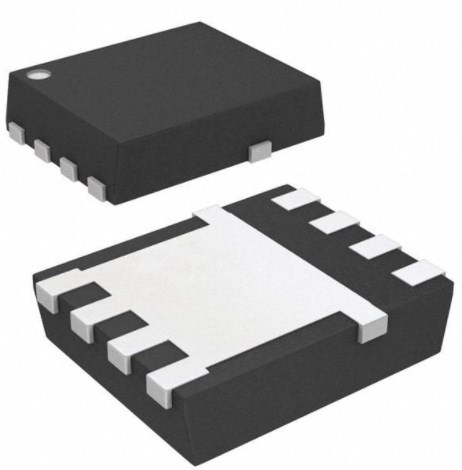 CSD18540Q5B, Pinout, Package
CSD18540Q5B, Pinout, Package21 March 20221105
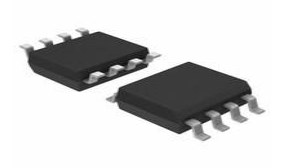 NE5532 - Dual Low Noise Op-Amp
NE5532 - Dual Low Noise Op-Amp09 December 20218442
 LPC1769 Microcontroller: Pinout, Datasheet and Programming
LPC1769 Microcontroller: Pinout, Datasheet and Programming23 September 20216014
 onsemi BCP54 Guide for Amplifier and Switching Circuits
onsemi BCP54 Guide for Amplifier and Switching Circuits19 August 202580
 ULN2803A Transistor Array: Pinout, Circuit, and Datasheet
ULN2803A Transistor Array: Pinout, Circuit, and Datasheet15 June 202117296
 CR2016 Battery: Pinout, Equivalents, CR2016 vs. CR2032
CR2016 Battery: Pinout, Equivalents, CR2016 vs. CR203206 October 20212558
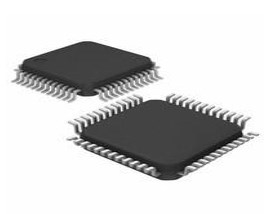 STM32F100C8T6B: 24MHz, 48-LQFP, Pinout and Datasheet
STM32F100C8T6B: 24MHz, 48-LQFP, Pinout and Datasheet28 February 20222586
![LMR240 VS LMR400[Video]: Which one is better?](https://res.utmel.com/Images/Article/f9e54e63-0519-4443-ba09-796117b1983c.png) LMR240 VS LMR400[Video]: Which one is better?
LMR240 VS LMR400[Video]: Which one is better?12 June 202411645
 What are the Commonly Used Anti-Jamming Technologies for Sensors?
What are the Commonly Used Anti-Jamming Technologies for Sensors?27 December 20211148
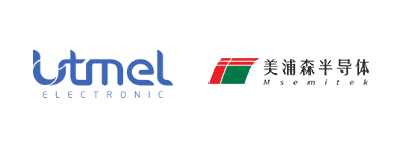 Msemitek Authorized Distributor | UTMEL Electronics
Msemitek Authorized Distributor | UTMEL Electronics21 November 20232152
 13 Semiconductor Startups Poised for Success in 2024, According to Investors
13 Semiconductor Startups Poised for Success in 2024, According to Investors11 December 20234070
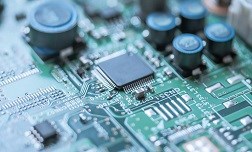 AC/DC, DC/DC Converter Fundamental Guide
AC/DC, DC/DC Converter Fundamental Guide28 February 202211638
 Introduction to Synchronous Counter and Asynchronous Counter
Introduction to Synchronous Counter and Asynchronous Counter31 March 202514799
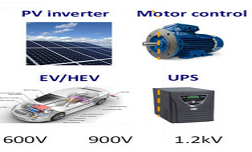 BSNPC Inverters in Photovoltaic Applications Using SiC and GaN
BSNPC Inverters in Photovoltaic Applications Using SiC and GaN04 January 20232686
 A Selection of the Most Representative Charts——Artificial Intelligence Index Report
A Selection of the Most Representative Charts——Artificial Intelligence Index Report18 March 2022676
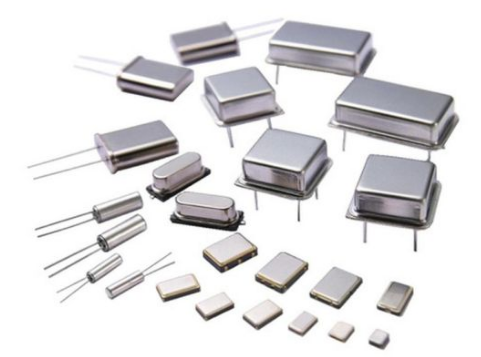 Understanding the Crystal Oscillator: Construction, Working Principles and Applications
Understanding the Crystal Oscillator: Construction, Working Principles and Applications08 July 20242753
Maxim Integrated
In Stock: 4500
United States
China
Canada
Japan
Russia
Germany
United Kingdom
Singapore
Italy
Hong Kong(China)
Taiwan(China)
France
Korea
Mexico
Netherlands
Malaysia
Austria
Spain
Switzerland
Poland
Thailand
Vietnam
India
United Arab Emirates
Afghanistan
Åland Islands
Albania
Algeria
American Samoa
Andorra
Angola
Anguilla
Antigua & Barbuda
Argentina
Armenia
Aruba
Australia
Azerbaijan
Bahamas
Bahrain
Bangladesh
Barbados
Belarus
Belgium
Belize
Benin
Bermuda
Bhutan
Bolivia
Bonaire, Sint Eustatius and Saba
Bosnia & Herzegovina
Botswana
Brazil
British Indian Ocean Territory
British Virgin Islands
Brunei
Bulgaria
Burkina Faso
Burundi
Cabo Verde
Cambodia
Cameroon
Cayman Islands
Central African Republic
Chad
Chile
Christmas Island
Cocos (Keeling) Islands
Colombia
Comoros
Congo
Congo (DRC)
Cook Islands
Costa Rica
Côte d’Ivoire
Croatia
Cuba
Curaçao
Cyprus
Czechia
Denmark
Djibouti
Dominica
Dominican Republic
Ecuador
Egypt
El Salvador
Equatorial Guinea
Eritrea
Estonia
Eswatini
Ethiopia
Falkland Islands
Faroe Islands
Fiji
Finland
French Guiana
French Polynesia
Gabon
Gambia
Georgia
Ghana
Gibraltar
Greece
Greenland
Grenada
Guadeloupe
Guam
Guatemala
Guernsey
Guinea
Guinea-Bissau
Guyana
Haiti
Honduras
Hungary
Iceland
Indonesia
Iran
Iraq
Ireland
Isle of Man
Israel
Jamaica
Jersey
Jordan
Kazakhstan
Kenya
Kiribati
Kosovo
Kuwait
Kyrgyzstan
Laos
Latvia
Lebanon
Lesotho
Liberia
Libya
Liechtenstein
Lithuania
Luxembourg
Macao(China)
Madagascar
Malawi
Maldives
Mali
Malta
Marshall Islands
Martinique
Mauritania
Mauritius
Mayotte
Micronesia
Moldova
Monaco
Mongolia
Montenegro
Montserrat
Morocco
Mozambique
Myanmar
Namibia
Nauru
Nepal
New Caledonia
New Zealand
Nicaragua
Niger
Nigeria
Niue
Norfolk Island
North Korea
North Macedonia
Northern Mariana Islands
Norway
Oman
Pakistan
Palau
Palestinian Authority
Panama
Papua New Guinea
Paraguay
Peru
Philippines
Pitcairn Islands
Portugal
Puerto Rico
Qatar
Réunion
Romania
Rwanda
Samoa
San Marino
São Tomé & Príncipe
Saudi Arabia
Senegal
Serbia
Seychelles
Sierra Leone
Sint Maarten
Slovakia
Slovenia
Solomon Islands
Somalia
South Africa
South Sudan
Sri Lanka
St Helena, Ascension, Tristan da Cunha
St. Barthélemy
St. Kitts & Nevis
St. Lucia
St. Martin
St. Pierre & Miquelon
St. Vincent & Grenadines
Sudan
Suriname
Svalbard & Jan Mayen
Sweden
Syria
Tajikistan
Tanzania
Timor-Leste
Togo
Tokelau
Tonga
Trinidad & Tobago
Tunisia
Turkey
Turkmenistan
Turks & Caicos Islands
Tuvalu
U.S. Outlying Islands
U.S. Virgin Islands
Uganda
Ukraine
Uruguay
Uzbekistan
Vanuatu
Vatican City
Venezuela
Wallis & Futuna
Yemen
Zambia
Zimbabwe



















